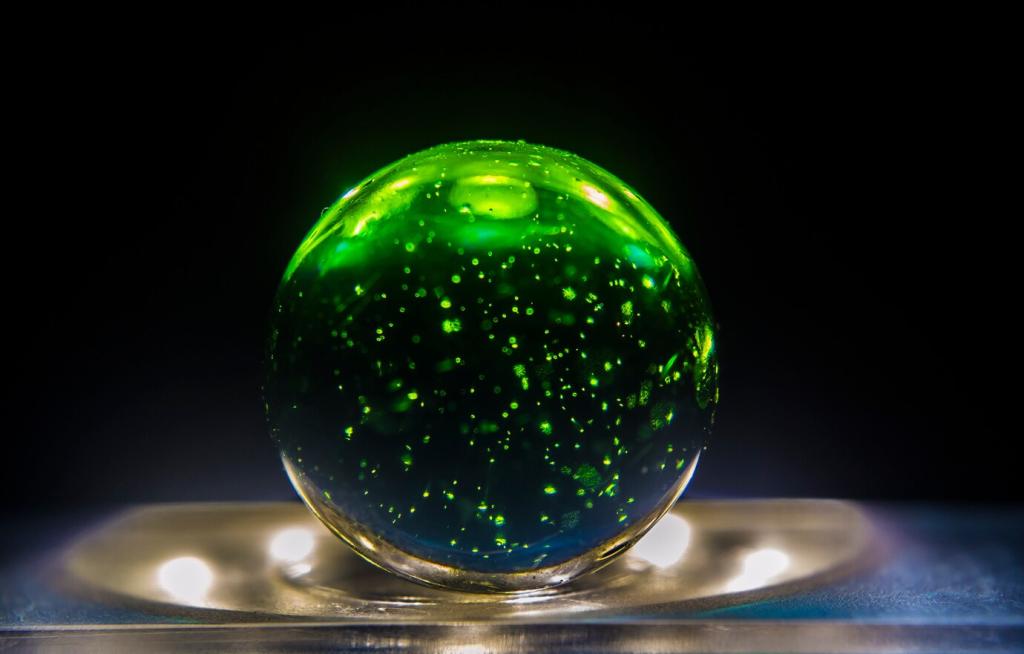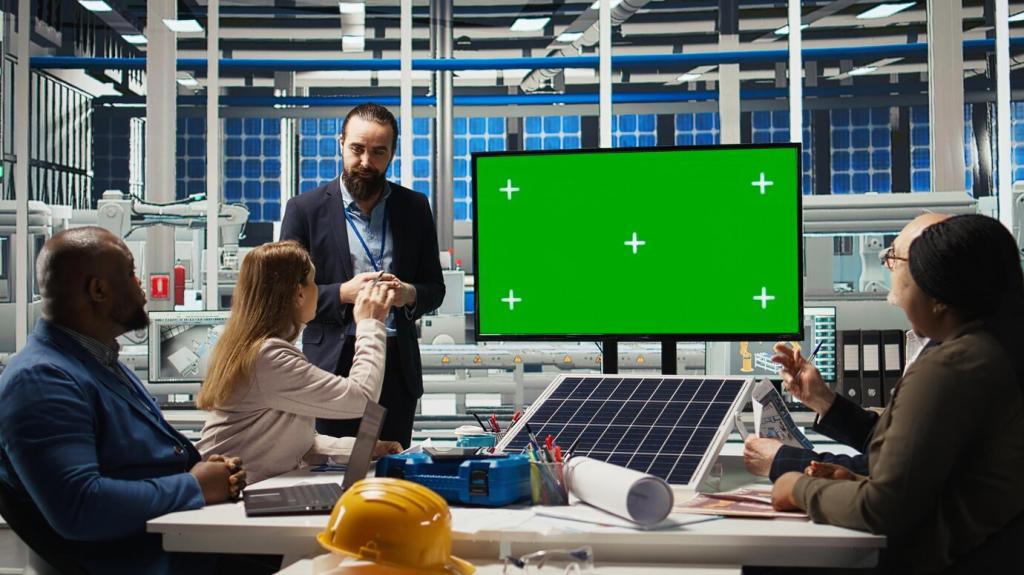Emerging technologies in renewable energy are transforming how the world generates, stores, and distributes clean power. As the world moves away from fossil fuels, innovation becomes the linchpin for sustainability. This evolving landscape includes breakthroughs across solar, wind, hydropower, geothermal, energy storage, smart grids, hydrogen solutions, and energy efficiency. The following sections delve into the latest advancements, practical applications, and the challenges and opportunities these technologies present for a clean energy future.
Next-Generation Solar Power
Perovskite Solar Cells
Perovskite solar cells are at the forefront of solar innovation, offering the potential to surpass traditional silicon-based photovoltaic cells both in efficiency and production cost. These cells use a unique crystal structure that enhances their ability to absorb sunlight and convert it into electricity. Unlike conventional silicon panels, perovskites can be manufactured using simpler processes, including printing on flexible substrates, allowing integration into a wide range of surfaces. Although challenges remain regarding their long-term stability and mass production, intensive research is bringing scalable, durable perovskite modules closer to commercial reality.

Bifacial Photovoltaics
Bifacial photovoltaics are revolutionizing solar installations by capturing sunlight from both the front and rear surfaces of a solar panel. This design maximizes energy yield by converting not only direct sunlight but also reflected and diffused light from the surroundings into usable power. These panels are particularly effective in environments with high albedo surfaces, such as snow or white rooftops, where they can significantly outperform traditional, single-sided panels. The technology is already finding traction in utility-scale solar farms looking to optimize land and investment returns.

Solar Integration in Building Materials
Modern solar technologies are being seamlessly integrated into building materials, turning everyday structures into power generators. Building-Integrated Photovoltaics (BIPV) replace ordinary parts of buildings, such as roofs, windows, or façades, with materials capable of producing electricity. This approach reduces the need for separate installations, enhances aesthetic appeal, and improves energy efficiency by generating power close to the point of consumption. Innovations in transparency, color, and flexibility are making BIPV a practical option for both new construction and retrofits.
Advanced Wind Energy Solutions
Floating offshore wind turbines allow developers to harness powerful winds over deeper waters where fixed-bottom structures are impractical. These platforms are anchored to the seabed but float on the surface, enabling placement in locations previously inaccessible to conventional turbines. With access to steadier, stronger winds, floating offshore arrays can generate more consistent electricity, boosting the reliability and output of offshore wind farms. Early projects in Europe and Asia show that this technology could play a vital role in global energy transition efforts.
Breakthroughs in Hydropower Technology
Small Modular Hydropower Systems
Small modular hydropower systems are reshaping the hydropower landscape by allowing low-impact generation in rivers and streams with minimal infrastructure. Unlike traditional large dams, these systems often require little to no water storage and pose fewer risks to local ecosystems and communities. Their modularity permits rapid deployment and scalability, making them ideal for rural electrification and distributed power generation. These systems are increasingly important in regions seeking to balance energy needs with environmental stewardship.
Fish-Friendly Turbines
Fish-friendly turbines are designed to minimize the impact of hydropower generation on aquatic ecosystems, particularly for migratory species. These turbines use specialized shapes and operating speeds to allow safe fish passage through or around hydroelectric installations, reducing mortality rates and supporting biodiversity. Advances in computational modeling and material science have enabled the development of turbines that balance both ecological considerations and energy output. Regulatory pressures and environmental awareness are accelerating the adoption of these technologies globally.
In-Stream Kinetic Energy Harvesting
In-stream kinetic energy harvesting involves capturing the natural flow of rivers and tidal currents without requiring reservoirs or barriers. Devices such as underwater turbines and oscillating foils are placed directly in flowing water, generating electricity from kinetic energy with minimal environmental disruption. These systems are particularly well-suited for off-grid or remote areas where traditional power infrastructure is lacking. Continued improvements in reliability and cost-effectiveness are helping this technology gain traction as a supplemental source of clean energy.

Innovations in Geothermal Energy
Enhanced geothermal systems (EGS) utilize advanced drilling techniques to access geothermal resources in areas where natural reservoirs are insufficient. By artificially creating pathways for hot water to circulate through deeply fractured underground rock, EGS can generate steam to drive turbines even in geographies lacking traditional geothermal features. Improvements in drilling, reservoir management, and heat exchange technologies are reducing costs and making EGS projects more viable. This emerging approach has the potential to dramatically expand the global availability of geothermal energy.
Energy Storage Revolution
01
Grid-scale batteries are becoming an essential component in modern energy systems, providing rapid-response backup and stabilizing power supply. Innovations such as solid-state designs, flow batteries, and lithium-sulfur chemistries are achieving higher energy densities, faster charging, and longer lifespans. These advances help utilities accommodate large shares of renewable energy, flatten demand peaks, and mitigate blackouts. As costs decline, grid-scale energy storage is increasingly integrated into both new and existing infrastructure.
02
Long-duration energy storage solutions are critical for managing extended periods of low solar or wind generation. Technologies under development include pumped heat, hydrogen production, compressed air energy storage, and innovative gravity-based systems. These methods can store surplus energy for days or weeks, facilitating the reliable use of renewables under all weather conditions. Early commercial deployments are demonstrating the feasibility and versatility of long-duration storage, which is poised to support cleaner, more resilient power grids.
03
Distributed energy storage involves placing batteries and other storage systems closer to end-users, such as in homes, businesses, and electric vehicles. This approach provides numerous benefits, including improved grid efficiency, enhanced local energy resilience, and support for renewable integration at the community level. Rapid progress in battery miniaturization, safety, and networked management systems is making distributed storage more practical and cost-effective. As adoption increases, it is expected to empower consumers and foster new business models in the evolving energy marketplace.
Smart Grids and Digitalization
Advanced Metering Infrastructure
Advanced metering infrastructure (AMI) provides utilities and consumers with precise, real-time information about energy consumption. Smart meters and associated communications networks facilitate demand response, distributed generation integration, and energy efficiency programs. This data-driven approach empowers users to monitor and adjust their usage, often through mobile apps or web portals. AMI is a foundational technology for modern grid management, supporting the seamless integration of renewables and improving overall system performance.
Grid Automation and AI
Grid automation harnesses the power of artificial intelligence (AI) and machine learning to anticipate grid fluctuations, prevent outages, and optimize power flows. Automated switches, sensors, and software platforms can respond to issues within milliseconds, reducing downtime and maintenance costs. AI-driven analytics help forecast energy demand and renewable output, guiding operational and investment decisions. As renewable penetration grows, automated and AI-enhanced grids will become essential for maintaining reliability and resilience.
Peer-to-Peer Energy Trading
Peer-to-peer (P2P) energy trading platforms enable homes and businesses with renewable generation to directly buy, sell, or share excess electricity within their communities. Utilizing blockchain technology and smart contracts, P2P networks allow transactions to occur securely and transparently. These systems incentivize local renewable adoption, increase grid flexibility, and can even lower costs for participants. As regulatory frameworks catch up, P2P trading has the potential to fundamentally reshape the relationship between consumers, producers, and utilities.
Previous slide
Next slide

